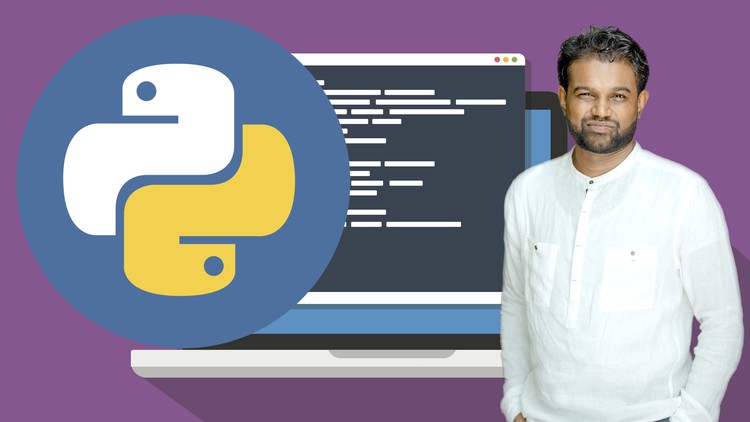
Learn programming from the scratch with a professional Software Engineer!
What you will learn
Python3 Basics (i.e. variables, loops, if-else)
Object Oriented Programming with Python
How to write well optimized high performing code in Python
Advanced topics in programming such as multi-threading and multi-processing
Getting started with creating GUI applications using PyQt
Learn about additional libraries you can use in Python
Description
Welcome to this Python course where you will learn to code with Python with basics and in-depth explanations.
Regardless of whether you’re a complete beginner or an intermediate, you can learn how to properly code in Python. Whether you need to pass your exam, get started with programming, even create advanced distributed data processing programs, you came to the right place.
My focus for this course is also to explain the “why” while explaining the “what” and “how”. Because most of the courses or documentation don’t cover that! But, being a Computer Science graduate and a Software Engineer with 11+ years of experience in programming, I believe I can properly explain the “why” when we’re writing code, to explain how exactly it works.
Why do you need to learn Python?
- It’s one of the most popular programming languages throughout the decade.
- Heavily used for Data Science and Machine Learning domains.
- Heavily used for Cloud Computing such as in AWS and GCP.
- Massively used for Distributed Computing such as in Apache Spark and Apache Beam.
- A trend has already started to write web services and APIs using Python.
- Very easy to learn, write, understand and maintain the code.
- Have improved performance throughout the years.
Here is a highlight of what we’ll cover in this course.
- Basics of Python programming (variables, loops, if-else)
- Object-Oriented Programming
- How to write optimized code
- Error handling
- Using third-party libraries
- Writing multi-threaded and multi-processed programs
- Introduce GUI application building with PyQt
- And much more!
(This course was initially made in my native language (Sinhala) and it had quite a lot of positive feedback, and that’s why I decided to create a brand new course with much more topics in English for a wider audience.)
(Sample code is attached to the last video, except a few, of each of the sections when available.)
So, why wait? Let’s get started!
Content